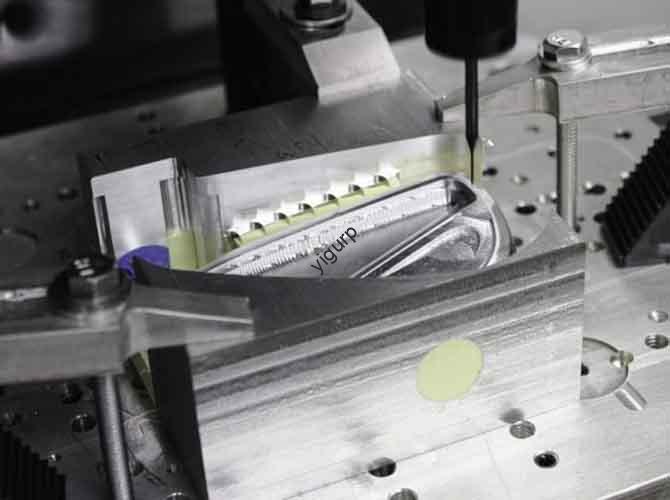When evaluating whether aluminum alloy prototypes are “costoso,” the answer depends on multiple factors—including material costs, processing methods, and project requirements. This article breaks down the key cost drivers, compares aluminum alloy prototypes to alternatives, and helps you determine if they fit your budget and needs.
1. Why Do Aluminum Alloy Prototypes Cost More Than Plastic Ones? A Direct Comparison
The most common reference point for prototype costs is 3D printed plastic prototypes (PER ESEMPIO., Pla, Addominali). Below is a side-by-side comparison to highlight the cost differences and reasons:
| Fattore | Aluminum Alloy Prototypes | 3D Printed Plastic Prototypes | Cost Gap Reason |
| Raw Material Cost | Più alto (PER ESEMPIO., 6061/6063 lega di alluminio: \(2- )5 al kg) | Inferiore (PER ESEMPIO., Pla: \(0.5- )1 al kg; Addominali: \(1- )2 al kg) | Aluminum alloys have higher raw material purity and mechanical property requirements. |
| Processing Waste | 15–30% waste (from CNC cutting/engraving) | <5% sciupare (produzione additiva) | Subtractive processes like CNC remove excess material, increasing waste. |
| Costo dell'attrezzatura | Alto (\(100K– )500k for CNC machines) | Inferiore (\(1K– )50k for FDM/FFF 3D printers) | CNC machines require high precision and automation, driving up depreciation costs. |
| Single-Piece Price | \(200- )2,000 (piccolo lotto, 1–10 pezzi) | \(20- )200 (same batch size) | Aluminum prototypes need more labor (programmazione, saldatura) e trattamento superficiale. |
2. Key Factors That Drive Aluminum Alloy Prototype Costs
Not all aluminum alloy prototypes cost the same—their price varies significantly based on 6 fattori fondamentali. Understanding these helps you optimize costs:
2.1 Metodo di elaborazione
Different processing techniques directly impact labor and time costs:
- CNC Precision Machining: The most common method for aluminum prototypes. It’s ideal for complex structures (PER ESEMPIO., fori filettati, hollow chambers) but requires 2–10 hours per piece (contro. 1–3 hours for plastic 3D printing). Costs increase with machining time.
- Welding/Assembly: Se il prototipo ha più parti (PER ESEMPIO., a 2-piece aluminum housing), welding adds \(50- )200 per joint, plus quality inspection time.
- Trattamento superficiale: Almost all aluminum prototypes need treatments to improve durability and appearance—each adds to the cost:
- Sabbiatura: \(30- )80 per piece
- Anodizzante (clear/colored): \(50- )150 per piece
- Elettroplazione (chrome/nickel): \(80- )250 per piece
2.2 Precision and Complexity
Higher precision or complexity = higher costs. Per esempio:
- A basic aluminum bracket with ±0.1mm tolerance costs ~$200.
- A medical device component with ±0.05mm tolerance and internal hollow channels costs ~\(800- )1,500.
Perché? Complex designs require:
- More detailed CNC programming (2–3x longer than simple designs).
- Multiple machining setups (PER ESEMPIO., flipping the part for 5-axis CNC).
- Post-elaborazione (PER ESEMPIO., deburring tiny gaps).
2.3 Quantità: Small Batches Hurt, Large Batches Don’t Help Much
A differenza dei prototipi di plastica (where injection molding reduces costs for large batches), aluminum prototypes have limited economies of scale:
| Dimensione batch | Aluminum Alloy Prototype Cost per Piece | Plastic Prototype Cost per Piece (Stampaggio a iniezione) |
| 1–10 pezzi | \(200- )2,000 | \(20- )200 (3D stampato) |
| 100–500 pezzi | \(150- )1,200 | \(5- )30 (injection molded) |
| 1,000+ pezzi | \(100- )800 | \(2- )15 (injection molded) |
Perché? Aluminum prototypes rely on CNC machining (no mold sharing), while plastic injection molding spreads mold costs across thousands of parts.
3. When Are Aluminum Alloy Prototypes Worth the Cost?
Aluminum prototypes are “costoso” only if they’re used for the wrong scenarios. Sono economico Quando:
- You need to test prestazioni meccaniche: Aluminum has higher strength (6061 lega: 276 Forza di trazione MPA) e resistenza al calore (punto di fusione: 660° C.) than plastic—critical for prototypes like engine parts or industrial tools.
- You require a premium texture: Anodized aluminum has a metallic finish that plastic can’t replicate (PER ESEMPIO., high-end smartphone casings, audio equipment).
- You need to verify metal component assembly: If the final product uses aluminum, testing with an aluminum prototype avoids fit issues (PER ESEMPIO., 螺丝 holes alignment, part mating).
4. Yigu Technology’s Perspective on Aluminum Alloy Prototype Costs
Alla tecnologia Yigu, Crediamo “expense” is relative to value. Aluminum alloy prototypes are not cheap, but they deliver irreplaceable benefits for high-stakes projects: they prevent costly design flaws in mass production (PER ESEMPIO., a misaligned aluminum bracket could ruin an entire device line). We often advise clients to prioritize their core needs: if functional testing (PER ESEMPIO., load-bearing) or aesthetic display is critical, aluminum is a wise investment. For budget-limited, low-stress scenarios (PER ESEMPIO., early-stage appearance models), we recommend starting with 3D printed plastic prototypes and upgrading to aluminum only when necessary. Our team also optimizes designs—simplifying curved surfaces or reducing thin walls—to cut CNC machining time by 15–25%, balancing cost and performance.
5. Domande frequenti: Common Questions About Aluminum Alloy Prototype Costs
Q1: Can I reduce aluminum alloy prototype costs without sacrificing quality?
SÌ. Optimize your design: remove unnecessary complex surfaces (PER ESEMPIO., non-functional arcs), use standard aluminum grades (6061 è più economico di 7075), and limit surface treatments to only what’s needed (PER ESEMPIO., sandblasting instead of electroplating for internal parts).
Q2: Is metal 3D printing a cheaper alternative to CNC-machined aluminum prototypes?
NO. Stampa 3D in metallo (PER ESEMPIO., SLM for aluminum) è più costoso (\(500- )3,000 per piece) and less mature. It’s only used for ultra-complex designs (PER ESEMPIO., Strutture reticolari) that CNC can’t produce. Per la maggior parte dei progetti, CNC-machined aluminum is cheaper and more reliable.
Q3: When should I choose injection-molded aluminum over aluminum prototypes?
Injection-molded aluminum (morire casting) is for produzione di massa (10,000+ pezzi). Il costo dello stampo (\(50K– )200k) is high, so it’s not feasible for prototypes. Use aluminum prototypes to verify your design first, then switch to die casting for large batches.
